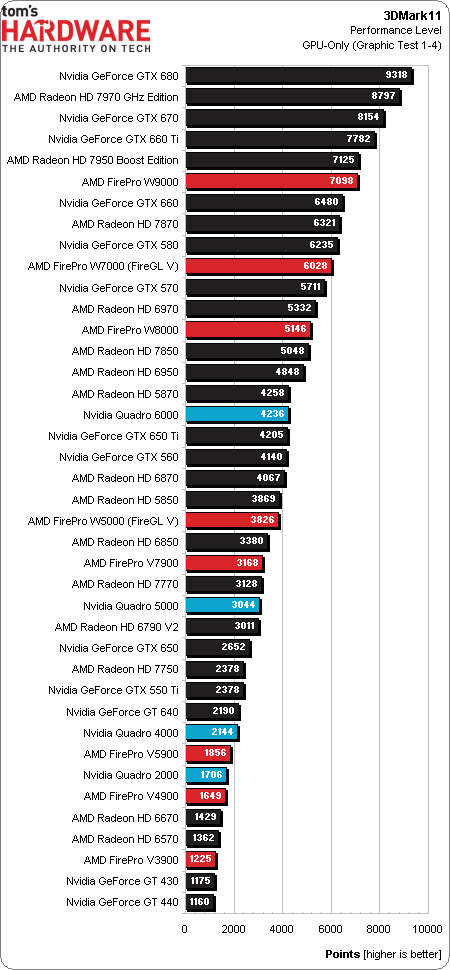How Well Do Workstation Graphics Cards Play Games?
We all know that gaming and workstation graphics cards employ the same hardware, differentiated by slight tweaks, drivers, and validation. We also know desktop cards usually perform awfully in professional apps. Does the reverse hold true as well?
Results: 3DMark 11
Why you can trust Tom's Hardware
3DMark 11
This isn't a title you can play, but it may help serve as a predictor of performance for titles unaffected by AMD's or Nvidia's marketing programs, which often emphasize vendor-specific features. I recommend keeping these numbers in mind for later. You'll find that they show 3DMark 11 as a decent benchmark of a graphics card's theoretical performance, since both companies optimize their drivers for it, even if it isn't representative of any real-world game.
Surprisingly, the AMD FirePro W7000 beats the W8000. The other numbers end up where we'd expect them to. But the results get more interesting on the next page as we look at another synthetic benchmark and one graphics card that posts surprising numbers.
Current page: Results: 3DMark 11
Prev Page Can Workstation Graphics Cards Play Games? Next Page Results: Unigine HeavenGet Tom's Hardware's best news and in-depth reviews, straight to your inbox.

Igor Wallossek wrote a wide variety of hardware articles for Tom's Hardware, with a strong focus on technical analysis and in-depth reviews. His contributions have spanned a broad spectrum of PC components, including GPUs, CPUs, workstations, and PC builds. His insightful articles provide readers with detailed knowledge to make informed decisions in the ever-evolving tech landscape


